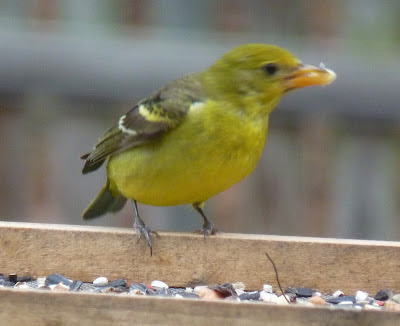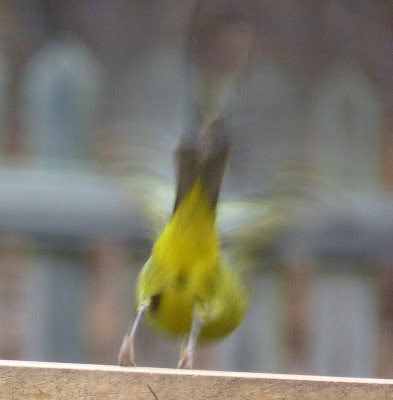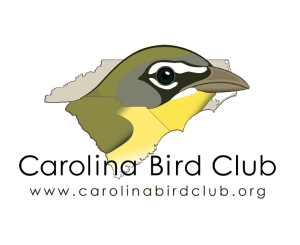When John Voigt invited me down to Southport to lead a couple of field trips for the Carolina Bird Club, I enthusiastically agreed.
Later I found out that the trips I would be leading would be to Bald Head Island, a place I hadn't visited since I was about 9-years-old and had never birded. Sounds like a recipe for disaster, but luckily Derb Carter, who had covered the island for the Southport Christmas Bird Count, emailed me some basic instructions and advice on birding spots (thanks Derb!)
Bald Head, for those of you have never been, is a pretty special place. It is unique for the North Carolina coast in that cars are prohibited, meaning that the principle modes of transportation are bicycle and golf cart. We rented several 4 or 6-passenger Pebble Beach buggies and rallied them about the island. Like slowing driving a Prius with the windows down, this is a great, quiet way to bird!
 |
| Golf carts! |
While I'm not familiar with the history of development at Bald Head, clearly much care has been taken to respect and preserve the natural landscape. The maritime forests are the most ancient and luxuriant I have seen except for perhaps Cumberland Island down in Georgia (another rare triumph in coastal preservation). But I digress...on to the birds!
Despite the beautiful forests, many of the common winter land birds are difficult if not impossible to find. No chickadees, titmice or nuthatches were to be found either day. Yellow-rumped Warblers were, of course, rather abundant.
 |
| Yellow-rumped Warbler |
And in one of the many flocks of "butterbutts" we managed to find a Black-and-White Warbler. Pretty cool bird to see in January!
And we did find this Towhee that seemed to be missing its tail.
 |
| Eastern Towhee sans tail |
But one doesn't make the trip to Bald Head for land birds. One highlight was the roosting waders we found around a pond on Middle Island (thanks to Derb for the tip!) I estimated 40 Tricolored Herons (the most any of us had ever seen in one place), 20 Black-crowned Night-Herons and White Ibises, with a few Little Blue Herons and Snowy Egrets mixed in.
The most noteworthy bird was probably an immature Common Eider at the southwestern end of the island. On Friday when it was rough, we also spotted a Jaeger here out in the chop harassing terns and Bonaparte's Gulls.
A nice surprise was that we were allowed to cruise all 18 holes of the golf course both days. This gave us a chance to see a Common Gallinule and nice little variety of ducks including Redhead, Lesser Scaup, Ring-necked Duck, Bufflehead, Hooded Merganser and best of all three Blue-winged Teal.
 |
| Lesser Scaup at the Bald Head golf course |
A huge thanks to the Bald Head Island Golf Club for being the most birder-friendly golf course I've ever known!
The ferry rides also provided some decent birds, most notably a Black Skimmer on the Saturday trip, as a well as a gorgeous sunset Friday evening. Unfortunately leading these trips makes me doubly forgetful about trying to get photos.
The birding was awesome and I got to meet some really fantastic birders and wonderful people. We ended up with 70 or so species each day with a two-day total of 82.
On the Sunday I went out with fellow "young" trip leaders and bird bloggers, Robert Meehan, Nate Swick and Michael McCloy for some target birding. Mark Kosiewski even drove down from Pittsboro to meet us. Here's a team photo Mark took at Greenfield Lake in Wilmington:
 |
| Lots of birding going on here! |
We found some Great Cormorants at Masonboro inlet (NC bird #299) and then visited Bruce Smithson's yard to see his resident Black-chinned Hummingbird (lifer #1545 and more importantly NC bird #300!). Bruce's feeder also had a female/immature and an adult Ruby-throated Hummingbird visiting regularly, which made for nice comparisons with the potential vagrant.
 |
| Black-chinned Hummingbird candidate (not that you can tell from this photo) |
Immature Black-chinned hummers are essentially unidentifiable in the field, but this one looked and behaved much differently than the Ruby-throated and there has been little doubt about its identity. Hopefully Susan Campbell will get to band it and confirm this soon!






















